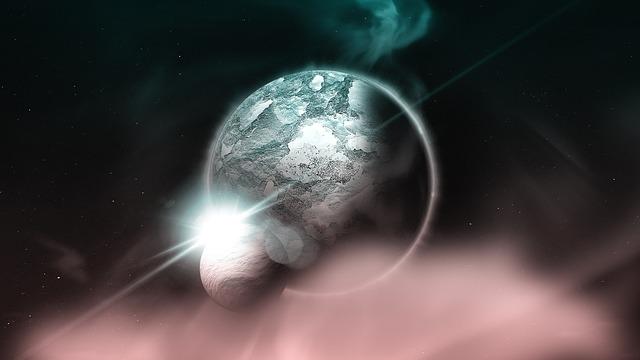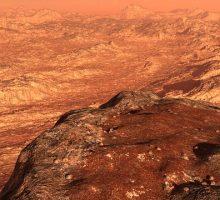Exploring the Wonders of Venus: An Introduction to the Planet
Venus, the second planet from the Sun, is often referred to as Earth’s “sister planet” due to its similar size and composition. However, despite its close proximity to Earth, Venus remains a mysterious and fascinating object of study for scientists and space enthusiasts alike. In this blog post, we will explore the wonders of Venus, from its early observations to our current understanding of the planet.
Why Venus is an Interesting Topic to Explore
Venus is often referred to as the “hottest planet” in the solar system due to its dense atmosphere, which traps heat and creates a runaway greenhouse effect. It has a surface temperature of over 450°C (840°F), which is hot enough to melt lead. Studying Venus’ atmosphere and climate can provide valuable insights into the workings of planetary atmospheres, including our own.
Venus is also an interesting subject of study because it is believed to have had a similar environment to early Earth. However, while Earth developed into a habitable planet with a diverse biosphere, Venus became a hostile and uninhabitable world. Studying the differences between the two planets can help us better understand the factors that contribute to habitability and the potential for life on other planets.
Brief History of Venus Research
The study of Venus dates back to ancient civilizations, who observed it as a bright star in the sky. In the modern era, scientists have been studying Venus in detail since the 17th century. The first spacecraft to visit Venus was the Soviet Union’s Venera 1 in 1961, followed by numerous missions from the United States, Soviet Union, and Europe.
Unraveling the Mysteries of Venus: Early Observations and Understanding
Venus, the second planet from the Sun, has been a subject of fascination and study for thousands of years. In this blog post, we will explore the early observations of Venus and how they contributed to our understanding of the planet.
Early Observations of Venus by Ancient Cultures
Ancient civilizations such as the Babylonians, Greeks, and Romans observed Venus in the night sky and named it after their goddess of love and beauty. The Maya and Aztecs of Central America also observed Venus and used its movements to create their calendars.
One of the earliest recorded observations of Venus was made by the Babylonians around 1600 BCE, who recorded its movements across the sky. The Greeks later observed Venus and noted its peculiar behavior, as it appeared to move in the opposite direction to other planets. They called this phenomenon “retrograde motion” and it was later explained by Copernicus’ heliocentric model of the solar system.
Early Scientific Observations of Venus
The first scientific observations of Venus were made in the 17th century by astronomers such as Galileo Galilei, who observed its phases and confirmed that it orbited the Sun. In the 18th century, astronomers used transit observations to calculate the size of the solar system, with Venus playing a key role.
In the 19th and 20th centuries, advances in technology allowed astronomers to make more detailed observations of Venus. They were able to measure its temperature, density, and atmospheric composition using telescopes and spectroscopy. In the 1960s and 70s, the Soviet Union’s Venera missions sent spacecraft to land on the surface of Venus, providing the first direct measurements of its environment.
Understanding of Venus’ Atmosphere, Composition, and Orbit
Early observations and scientific studies helped to build our understanding of Venus’ atmosphere, composition, and orbit. It was discovered that Venus has a thick atmosphere composed mainly of carbon dioxide, which creates a strong greenhouse effect that traps heat and makes the planet’s surface extremely hot.
Venus’ orbit is also interesting, as it rotates on its axis in the opposite direction to most other planets in the solar system. Its orbit is also highly elliptical, which means that its distance from the Sun varies significantly over time.
Pioneering Missions to Venus
The first missions to explore Venus were the Soviet Union’s Venera missions in the 1960s and 70s. They provided the first direct measurements of Venus’ environment, including its temperature, pressure, and atmospheric composition.
In the 1990s, NASA’s Magellan mission used radar to map Venus’ surface and provide detailed images of its geological features. More recently, the Japanese Aerospace Exploration Agency’s Akatsuki spacecraft has been studying Venus’ atmosphere and weather patterns since 2015.
The Unforgiving Atmosphere of Venus: Understanding the Climate and Composition
Venus, the second planet from the Sun, is known for its thick and hostile atmosphere, which makes it one of the most extreme environments in the solar system. In this blog post, we will explore the composition and climate of Venus’ atmosphere and how it contributes to the planet’s unique environment.
Composition of Venus’ Atmosphere
Venus’ atmosphere is composed primarily of carbon dioxide, with small amounts of nitrogen and other gases such as sulfur dioxide and argon. The high concentration of carbon dioxide, which is a greenhouse gas, creates a strong greenhouse effect that traps heat and raises the surface temperature to over 450°C (840°F).
The atmosphere is also rich in sulfuric acid clouds, which reflect sunlight and contribute to the planet’s bright appearance in the sky. The thick clouds also obscure the surface of Venus, making it difficult to observe from space.
Climate of Venus
Venus’ climate is characterized by extreme heat, high pressure, and acidic conditions. The thick atmosphere creates a greenhouse effect that traps heat, making the surface temperature hot enough to melt lead. The pressure at the surface is also around 90 times that of Earth’s atmosphere, which would crush most objects.
The atmospheric circulation on Venus is also unique, with strong winds that circle the planet in a phenomenon known as “superrotation.” This means that the atmosphere moves faster than the planet itself, with winds reaching speeds of up to 360 kilometers per hour (220 miles per hour).
Impact of Venus’ Atmosphere on Its Surface
The extreme conditions in Venus’ atmosphere have a significant impact on the planet’s surface. The thick clouds reflect sunlight, which means that the surface of Venus receives less solar energy than Earth, despite being closer to the Sun.
The high temperatures and pressure on the surface also mean that it is unlikely that liquid water or life as we know it could exist there. However, recent studies have suggested that there may be microbial life in the clouds of Venus, where the conditions are less extreme.
Future Studies of Venus’ Atmosphere
Despite the challenges posed by Venus’ atmosphere, there is still much to be learned about the planet’s climate and composition. Future missions to Venus, such as NASA’s VERITAS and DAVINCI+ missions, will provide new insights into the planet’s geology, atmosphere, and potential for life.
The Mysterious and Harsh Landscape of Venus: Surface Features and Geological Activity
While Venus’ thick atmosphere has made it difficult to study the planet’s surface, recent missions have revealed a number of fascinating features and geological activity. In this blog post, we will explore the surface features of Venus and what they tell us about the planet’s history and composition.
Craters and Impact Basins
The surface of Venus is covered in craters, caused by impacts from asteroids and comets. These craters range in size from a few meters to over 200 kilometers (125 miles) in diameter. Many of the smaller craters have been eroded by wind and volcanic activity, while the larger ones remain visible.
Venus also has a number of impact basins, large depressions that are formed by the impact of a large asteroid or comet. These basins can be up to 2,000 kilometers (1,240 miles) in diameter and are surrounded by rings of mountains and ridges.
Volcanoes and Lava Flows
Venus is home to a vast array of volcanoes and lava flows, making it one of the most geologically active planets in the solar system. Some of the largest and most prominent features on Venus are the shield volcanoes, which can be up to 4 kilometers (2.5 miles) high and 200 kilometers (125 miles) in diameter.
Lava flows on Venus can be hundreds of kilometers long and are made up of basalt, a type of volcanic rock. Some of the lava flows have been dated to be less than a few million years old, indicating that Venus may still be volcanically active.
Mountain Ranges and Plateaus
Venus also has a number of large mountain ranges and plateaus, which are believed to have formed through a combination of tectonic activity and volcanic processes. The highest mountain on Venus, Maxwell Montes, is over 11 kilometers (7 miles) high and is located near the planet’s equator.
The planet also has several large plateaus, including Lakshmi Planum, which covers an area roughly the size of Australia. These plateaus are thought to have formed through the upwelling of magma from deep within the planet’s mantle.
Uncovering the Mysteries of Venus: A Look at Venus Exploration Missions
Venus, the second planet from the Sun, has long been a target of exploration for scientists and space agencies. In this blog post, we will explore the history of Venus exploration missions and the insights they have provided into the planet’s composition, atmosphere, and potential for habitability.
Early Venus Missions
The first missions to explore Venus were flybys conducted by the Soviet Union in the early 1960s. These missions provided the first close-up views of the planet and revealed a hot, hostile environment with a thick atmosphere and a surface covered in craters and volcanoes.
In 1970, the Soviet Union’s Venera 7 became the first spacecraft to land on Venus, sending back the first data from the planet’s surface. The mission revealed a surface temperature of around 475°C (900°F) and a pressure of around 90 times that of Earth’s atmosphere.
NASA’s Exploration of Venus
In the 1970s and 1980s, NASA launched a series of missions to Venus, including the Pioneer Venus and Magellan missions. These missions provided new insights into Venus’ geology and atmosphere, including the discovery of large volcanoes, extensive lava flows, and a global system of tectonic belts.
Magellan, which arrived at Venus in 1990, was the first mission to use radar imaging to map the planet’s surface in detail. The mission revealed a complex landscape of mountains, valleys, and canyons, as well as evidence of recent volcanic activity.
Recent Venus Missions
In recent years, interest in Venus exploration has been rekindled, with a number of new missions planned or underway. In 2021, NASA announced two new missions to Venus: VERITAS and DAVINCI+. VERITAS will use radar to map the planet’s surface and study its geology, while DAVINCI+ will descend through the atmosphere to study its composition and structure.
The European Space Agency (ESA) is also planning a mission to Venus, called EnVision, which will study the planet’s atmosphere, surface, and interior. The mission is expected to launch in the early 2030s.
Could There Be Life on Venus? A Look at the Possibility of Extraterrestrial Life on the Second Planet from the Sun
For many years, scientists believed that Venus was an unlikely candidate for extraterrestrial life, given its harsh environment and inhospitable conditions. However, recent discoveries have challenged this assumption, raising the possibility that life could exist on Venus. In this blog post, we will explore the possibility of life on Venus and what it could mean for the search for life beyond Earth.
The Habitable Zone and Venus
One of the key factors in the search for extraterrestrial life is the concept of the habitable zone, the region around a star where conditions are suitable for the existence of liquid water on a planet’s surface. While Venus is well within the Sun’s habitable zone, its thick atmosphere and high surface temperature of around 475°C (900°F) have long been thought to make it an unlikely candidate for life.
However, recent discoveries have suggested that life could exist in the clouds of Venus, where temperatures and pressures are more moderate. In 2020, a team of scientists announced the discovery of phosphine gas in the planet’s atmosphere, a potential biosignature that could indicate the presence of microbial life.
Exploring the Possibility of Life on Venus
The discovery of phosphine on Venus has sparked renewed interest in exploring the possibility of life on the planet. One idea is to send a mission to Venus that would sample the atmosphere and search for signs of microbial life. This mission could include a balloon or aircraft that would float in the planet’s atmosphere, collecting data and samples.
Another approach is to study the composition of the planet’s clouds in more detail. By analyzing the chemicals present in the clouds, scientists could learn more about the conditions in which life could potentially exist on Venus.
The Implications of Life on Venus
The discovery of life on Venus would have significant implications for our understanding of the universe and the potential for extraterrestrial life. It would suggest that life could exist in a wider range of environments than previously thought, and could provide insight into the origins and evolution of life.
Venus in Culture and Mythology: A Look at the Second Planet’s Role in Human History and Imagination
Venus has long captured the human imagination, appearing in mythology, art, and literature throughout history. In this blog post, we will explore the cultural significance of Venus and its role in human history and imagination.
Venus in Mythology
In ancient mythology, Venus was often associated with love, beauty, and fertility. In Greek mythology, Venus was known as Aphrodite, the goddess of love and beauty. She was said to have been born from the sea foam and was married to Hephaestus, the god of fire and metalworking.
In Roman mythology, Venus was known as the goddess of love, beauty, and fertility. She was the mother of the god of love, Cupid, and was often depicted with a son, a symbol of her role in fertility and motherhood. Venus was also associated with the planet that shares her name, and her associations with love and beauty have continued to influence art and culture throughout history.
Venus in Art and Literature
Throughout history, artists and writers have been inspired by Venus’s beauty and mythology, creating works of art and literature that celebrate her. In the Renaissance period, artists such as Sandro Botticelli depicted Venus in their paintings, often showing her as a beautiful, idealized figure.
In literature, Venus has been a popular subject in poetry and fiction, appearing in works such as Shakespeare’s “Venus and Adonis” and the epic poem “Metamorphoses” by Ovid. Venus has also been referenced in popular culture, from songs like “Venus” by Bananarama to movies like “Venus in Fur.”
Venus in Astronomy and Science
In addition to its cultural significance, Venus has played a significant role in astronomy and science. Its close proximity to Earth and its visible appearance in the night sky have made it a popular object of study for astronomers throughout history.
Venus has also been the subject of several scientific missions, including NASA’s Magellan spacecraft, which orbited the planet in the 1990s and produced detailed maps of its surface features. More recently, the discovery of phosphine gas in the planet’s atmosphere has led to renewed interest in exploring Venus and studying its potential for extraterrestrial life.
Conclusion – What We’ve Learned About Venus
After exploring the different aspects of Venus, from its early observations and understanding to its surface features and potential for life, we have gained a greater understanding of this fascinating planet. In this blog post, we will summarize the key takeaways from our exploration of Venus.
Venus is a unique planet with a number of interesting features and characteristics. From its thick atmosphere to its extreme temperatures and pressures, Venus has long captured the attention of astronomers and space scientists. Here are some of the key takeaways from our exploration of Venus:
- Venus’s Atmosphere: Venus’s thick atmosphere is primarily composed of carbon dioxide, which creates a greenhouse effect that traps heat and raises temperatures to over 450 degrees Celsius (800 degrees Fahrenheit). The planet’s atmosphere also contains sulfuric acid clouds that create a reflective layer, making Venus the brightest object in the sky after the sun and the moon.
- Surface Features: Venus’s surface is marked by a number of volcanic features, including large shield volcanoes and extensive lava flows. The planet also has impact craters, mountain ranges, and vast plains that were likely formed by tectonic activity.
- Exploration Missions: Over the years, a number of spacecraft have explored Venus, providing scientists with valuable information about the planet’s composition, atmosphere, and surface features. NASA’s Magellan spacecraft, which orbited the planet in the 1990s, produced detailed maps of Venus’s surface, while the European Space Agency’s Venus Express mission studied the planet’s atmosphere and weather patterns.
- Possibility of Life: While Venus’s harsh environment makes it unlikely that life exists on the planet, recent discoveries of phosphine gas in the planet’s atmosphere have raised the possibility of microbial life existing in the planet’s clouds. More research is needed to confirm this possibility and understand the origins of the gas.







